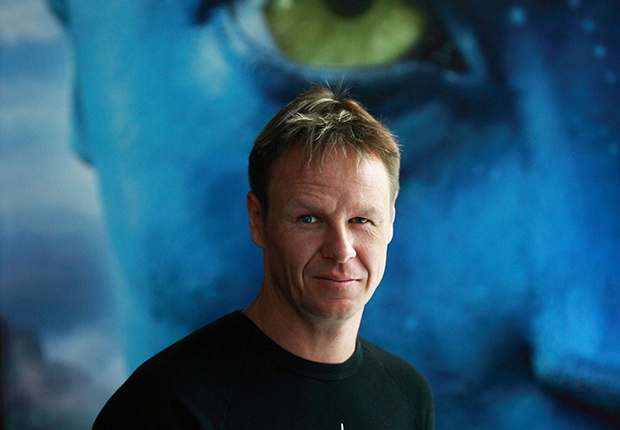Professor Mark Sagar
Mark Sagar, Ph.D., FRSNZ is CEO and Cofounder at Soul Machines and the Double Academy Award winner Associate Professor and Director of the Laboratory for Animate Technologies in the Auckland Bioengineering Institute at The University of Auckland.
Mark’s core interests are Cooperation, Creativity, and Consciousness.
At Soul Machines, Mark is humanizing the interface between people and machines so that we might better cooperate with them in the future. His team is developing autonomously animated virtual humans with virtual brains and nervous systems, capable of highly expressive face to face interaction and real-time learning.
Mark creates characters made out of flesh and code. By creating interactive models of human cognition, emotion and appearance, Mark aims to give new insights into human nature, exploring how interconnected neural processing models give rise to intelligent and emotional behavior; build the foundation for future human-intelligent machine co-operation; and democratize artificial intelligence by making it intuitive to use in a face-to-face manner by millions; and in the process of exploring this hopefully reveal insights on how we cooperate, create, and experience consciousness.
His pioneering work in computer-generated faces was recognized with two consecutive Oscars at the 2010 and 2011 Sci-tech awards, a branch of the Academy Awards that recognizes movie science and technological achievements. Mark has a Ph.D. in Engineering from the University of Auckland and was a post-doctoral fellow at M.I.T. He previously worked as the Special Projects Supervisor at Weta Digital and Sony Pictures Imageworks and developed technology for the digital characters in blockbusters such as Avatar, King Kong, and Spiderman 2.
Mark started his career by building computer simulations of the human eye for virtual surgery.
He was born in Kenya to an artist mother and systems analyst father. His mother taught him from an early age about the fundamentals of drawing faces. Before his Ph.D., he spent three years traveling the world sketching portraits before returning to Auckland to study.
Mark earned his Ph.D. in Engineering and his Bachelor’s Degree of Science in Physics and Mathematics from the University of Auckland. His research was a landmark study on how to develop an anatomically correct virtual eye and realistic models of biomechanically simulated anatomy. It was one of the first examples of how lifelike human features could be created on a screen by combining computer graphics with mathematics and human physiology.
His supervisors, Professor Gordon Mallinson from Mechanical Engineering and Professor Peter Hunter, Director of the Auckland Bioengineering Institute (ABI), considered Mark to be a unique researcher because he had both outstanding artistic and mathematical abilities.
Mark’s virtual eye was made for an ophthalmic surgery robot being developed by Peter Hunter’s brother, Professor Ian Hunter at the Massachusetts Institute of Technology. After completing his thesis, Mark relocated to the States to join Ian’s lab.
He did his postdoctoral research at the Massachusetts Institute of Technology and he ended up in an MIT spin-out company set up in Hollywood to realize the potential of their anatomically-based graphical animations to the film industry.
After the dot-com crash, Mark was able to move on to LA-based Sony Imageworks in 2002, and in 2004 relocated back to New Zealand, where he joined Weta to work on Peter Jackson’s King Kong.
A few years later, the technology took another huge leap forward when Mark and his Weta colleagues started collaborating with James Cameron on Avatar. The possibility of working with Cameron pushed the team to make the facial performance capture system work in real-time.
Mark then started developing unprecedentedly detailed biomechanical models of faces, and then, combined with his long term interest in neuroscience and artificial intelligence, began wondering about combining all of these elements to bring realistic autonomously animated characters to life – to explore the very essence of animation.
“At some point in the future, we should have a decent enough computational model to create the external manifestation of consciousness. It’s so cool to explore because it taps into what it means to be alive; people just know when something is alive or not.”
To get there, Mark hopes we can create more synergies between different fields, from psychology and human behaviour to biomedical engineering and the arts, with a common goal in mind.
In 2012 Mark set up a lab to pursue this vision at the Auckland Bioengineering Institute where he collaborated with Neuroscientists and Developmental Psychologists to develop BabyX, an autonomously animated virtual infant driven by an artificial nervous system. In 2016 the lab was spun out to form the company Soul Machines.
Mark a recipient of the University of Auckland’s 2012 Distinguished Alumni Award and was elected a Fellow of the Royal Society of New Zealand in 2019 in recognition of his world-leading research.
Watch The Age of A.I. hosted by Robert Downey Jr. featuring Baby X presented by Mark. Watch Creating Virtual Humans: The Future of AI | Growing Up Android: Optimizing Artificial Intelligence for the Next Generation.
Watch The astonishingly real virtual baby that laughs, cries, and learns at TEDxChristchurch, Greg Cross and Dr. Mark Sagar from Soul Machines at AI-DAY New Zealand, and Emotionally intelligent avatars: Humanizing the interface between man and machine.
Listen to Putting Emotions, Expression, and Humanity into Machines.
Read Q&A with the Academy Award-winning AI engineer; the Insights from Mark at Cannes Lions; and NBR’s reporting on Mark.
Read The man who built a virtual nervous system explains how humans will interact with machines in ten years; An Artificially Intelligent Baby Could Unlock the Secrets of Human Nature; and A marvellous evening.
Visit his LinkedIn profile, ResearchGate profile, dblp profile, his University profile, and his University Alumni page. Follow him on Facebook, IMDb, Instagram, and Twitter.





